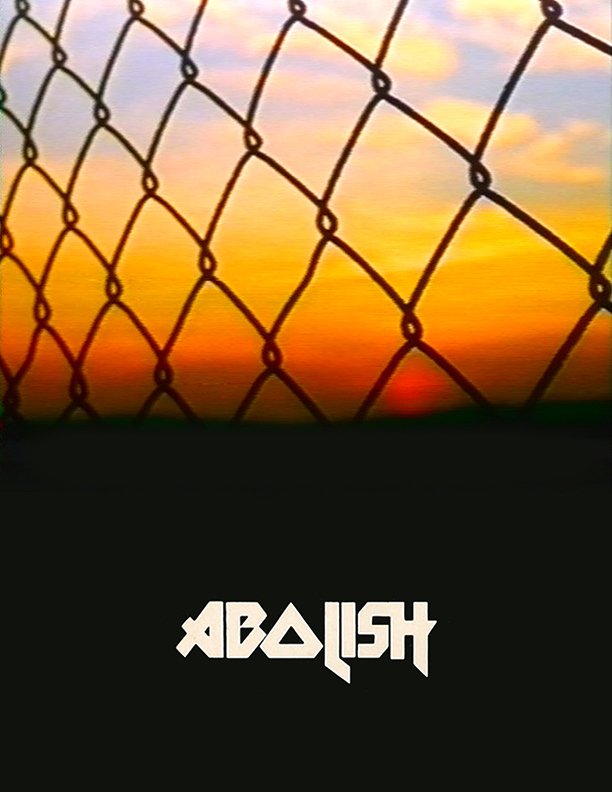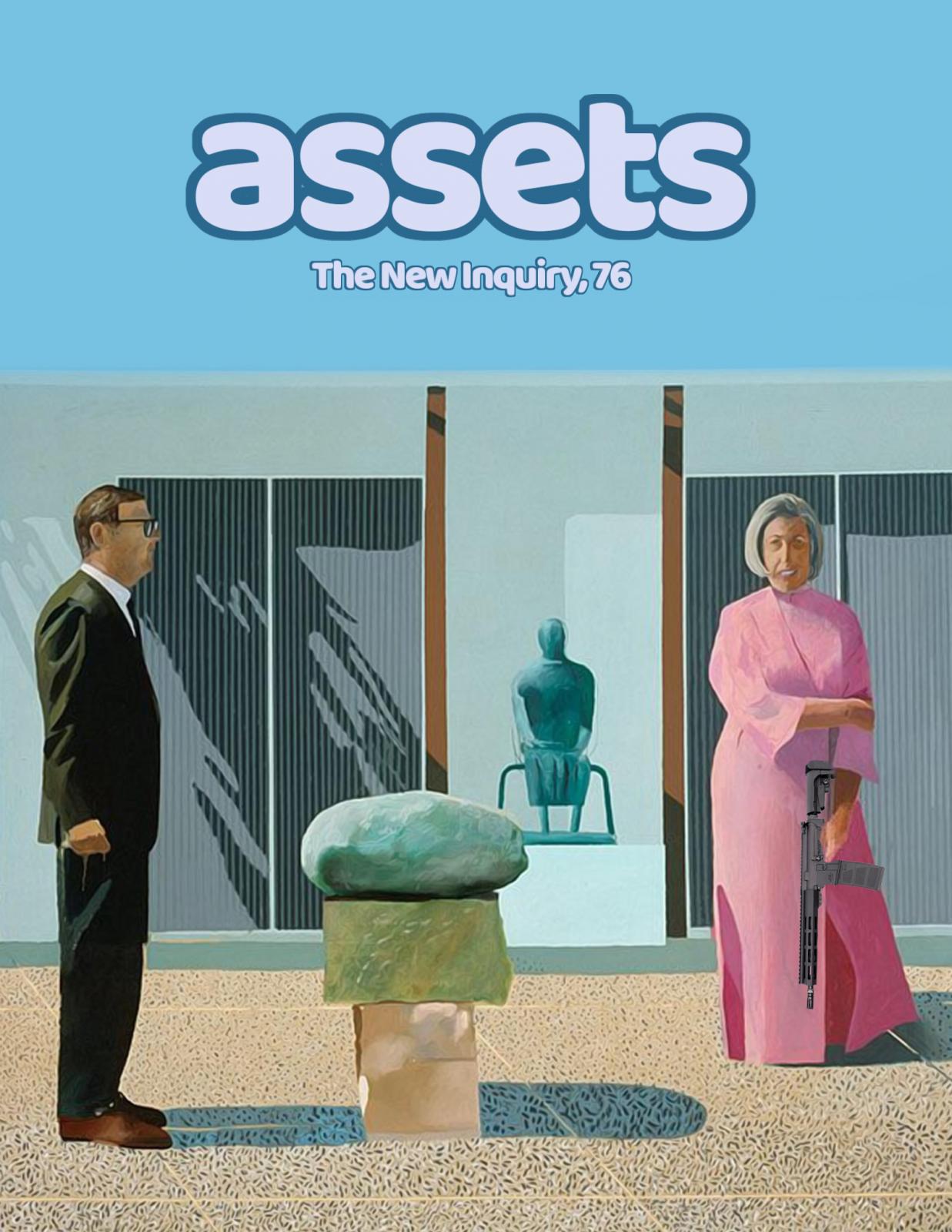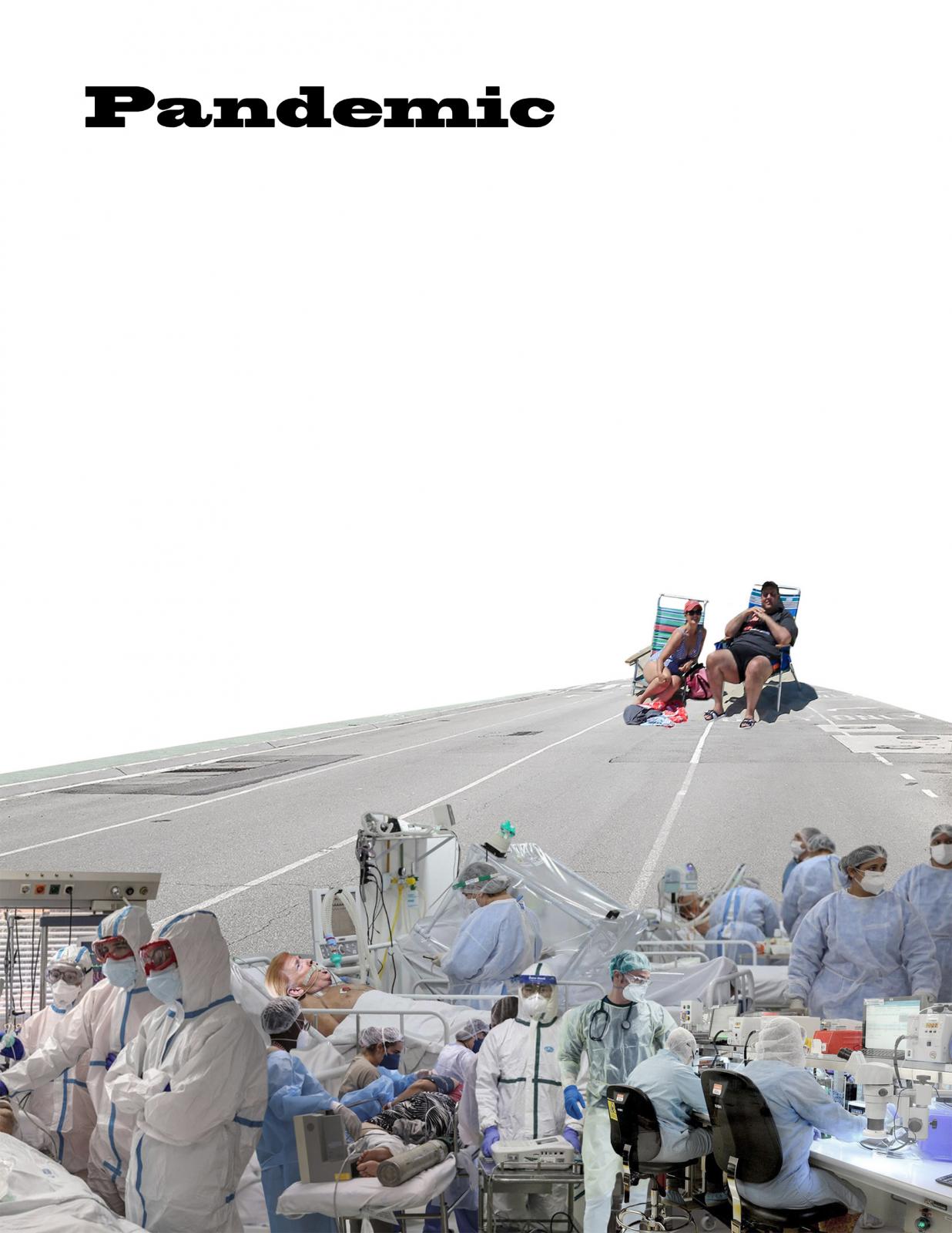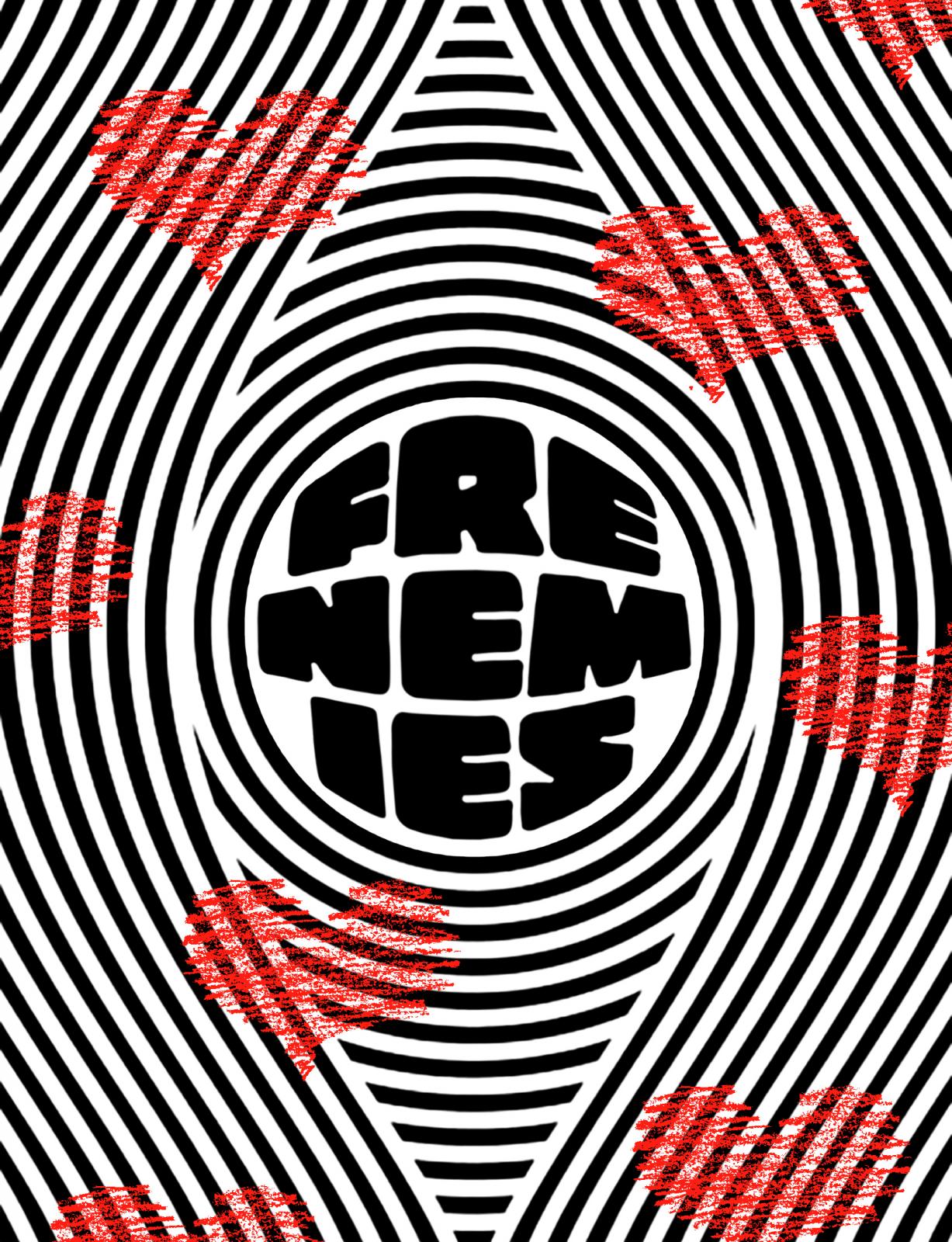Abolish
Editors' Note
AS Hurricane Sandy headed for New York City in 2012, then-Mayor Bloomberg fielded questions on his radio show regarding plans for the inmates at Rikers. The prison island had been left off of maps marking “evacuation zones,” and callers were concerned about flooding. “Jails are secured,” he responded. “Don’t worry about anybody getting out.” For Bloomberg, the people held in his jails could not be conceived of as vulnerable to a devastating storm; they could only be seen as a threat.
It is long past time to save this world; the task now is to end it. To begin anew seems like the only realistic way out. The prison is the real contradiction to our current freedom: it is both the limit and heart of every liberty we can possess. The right to sell our labor freely on pain of death does not extend inside its walls; the right to assemble–except to form a new social order–does not hold; even the right to have rights is a privilege there, arbitrarily granted and taken away. Abolition presents itself as the most contemporary political endeavor and at the same time as the most venerable. Because the prison is everywhere, there is no way forward without its end.
As the designs of the new administration become more and more obvious (“Segregation now, segregation forever” sounds a lot like “Make America Great Again”), a critical focus on those political traditions which always saw prison as the keystone of the historical American project–Native genocide, theft of land, property in Africans–is not only urgent but necessary. About 2.2 million people were held in cages across the United States in 2016. Further incarceration is coming. The camps are already here.
Abolition work begins by rejecting reform agendas that uphold the legitimacy of racial capitalism which even the most anodyne policing serves. In “The Myth of Liberal Policing,” Alex Vitale traces the history of Western police forces from strike-busting and slave patrols, to their inspiration in and enabling of colonial projects. Movements for police accountability must “look not to ‘reform’ police,” writes Vitale, “but to reduce their scope and power.” Insofar as the state is an instrument of class rule, the police have no function but to uphold its racist order.
A mother from the Bronx writes an open letter describing the 2016 police raids that brought some 700 police officers down on Eastchester, New York. The 120 young men arrested in the sweep were paraded in front of the media and jailed on trumped-up racketeering charges. The mother notes that some of the families of the “Bronx 120” have been evicted following the raids, connecting the criminalization of black and brown people to the gentrifying forces leveling New York. “We want people everywhere to stand in solidarity with us,” she writes, “for the survival of black and brown people currently facing genocide, our youth and our future.”
Working towards abolition can sometimes feel far-fetched, so the tools of speculative fiction are particularly useful for it. Walidah Imarisha, editor of the social justice sci-fi collection Octavia’s Brood, sat down with contributors Alexis Pauline Gumbs, Leah Lakshmi Piepzna-Samarasinha, Adrienne Maree Brown, and Mia Mingus to discuss the imaginative challenges of enacting substantive transformative justice. Piepzna-Samarasinha calls for attention to everyday opportunities for transformative justice, the “little big moments of change.” Brown reports on the radical effects of unlearning dishonesty and Mingus encourages us to build pods: groups of people to call on when you have harmed or been harmed. “What if abolition isn’t a shattering thing, not a crashing thing, not a wrecking ball event?” asks Gumbs.
Likewise, attention must be paid not just to the brute force of the prison system but to its slow, banal violence. Jarrod Shanahan reads Lil Wayne’s prison memoir Gone ‘Til November, finds it boring, and sees in that boredom a record of prison reform’s failures. Inmates lead stultifying days in prisons, which, having given up on rehabilitation, offer no programming or space for self-education, but instead enforce order with the punitive use of solitary confinement and long lockdown periods. This is reflective of a broader reality in which people are jailed because society has no place for them. “The inmate is bored because there is no need for the inmate to be anything but bored,” observes Shanahan. Abolition work must recognize that “even the most boring day at Rikers is indefensible.”
Barrett Brown served a four year sentence in Texas for “researching state-corporate surveillance partnerships” with Anonymous. In his contribution to this issue, he documents his own “year-and-a-half-long experiment” navigating the paralegal tactics prison administrators use to deny their inmates any effective right to bring their captors to court. Such limited avenues for redress leave 2.2 million people in a “state of perpetual vulnerability to unchecked state power.”
Solitary is torture. But for Deaf inmates, incarceration can be a “prison within a prison,” in the words of some advocates. Sara Nović’s “Right to Remain Silent” explores the way Deaf people are subjected to unique forms of violence at the hands of law enforcement, from arrest to trial to incarceration. At arrest, they are punished for “failure to respond to verbal commands”; at trial, they face juries with no understanding of Deaf culture; in prison, status-quo communication protocol makes little room for accommodation. The left still tends to leave ableist structures off the agenda for change, Nović argues, when intersectionality “still cannot cross the sound barrier.”
In “This Is Going to Hurt,” Lacino Hamilton asks what tactics transform a protest movement into a social movement capable of revolutionary change. The essay considers historical insights from Bayard Rustin, Ella Baker (“The struggle is bigger than eating a hamburger at a white lunch counter”), and the Lowndes County Freedom Organization as the Civil Rights Movement shifted from targeted actions against Jim Crow to a broader program of political and social demands. As Black Lives Matter looks to make a similar leap, Hamilton writes, “Demonstrators and protesters must have imagination and daring, and they must assume the risk of real social change.”
One of the most impressive political events of the past year was the September prison strike, called for the 45th anniversary of the Attica uprising. Roca Beltrán interviewed organizers Melvin Ray of the Free Alabama Movement (FAM) and Cole Dorsey of Oakland Incarcerated Workers Organizing Committee (IWOC). Calling prison labor modern slavery is a misnomer, say Ray and Dorsey. In the 1870s, after slavery “ended,” convict slave labor afforded Alabama 70 percent of its state budget, and today states still plug budget holes with the profits from incarceration. Ray and Dorsey discuss the strikes and ongoing organizing efforts. “[L]et the crops rot in the field,” says Ray, “Let the factories remain idle. Let the products of the cafeteria rot.”
Convict labor generates profits, and prison operation itself is an industry (albeit 90 percent state-run). That means it is subject to capitalist logics of cost-cutting and rent-seeking. In “Homeward Bound,” Luke Martinez lays out how the innovation of ankle monitors allows the carceral industry to charge for the luxury of providing your own lodging and food, “outsourcing not only the housing and upkeep of the inmate but shaming as well.” The horror people feel at going to prison allows its operators to blackmail people into paying for their own incarceration–and the population under such a supervision continues to expand, blurring the lines between surveillance, shame, and self-monitoring. “Only by making this process visible,” Martinez writes, “can we begin to undermine it.”
Moral judgements, including shame, are central to upholding the “violent/nonviolent” prisoner dichotomy loved by criminal justice reformers like former President Obama. But, as Victoria Law writes, most people convicted of violent crimes are themselves victims of larger systems of violence which uphold the system of property. “Focusing on nonviolent crimes allows lawmakers–and the general public–to continue sidestepping these fraught conversations and the work needed to eliminate the many forms of violence perpetrated by capitalism and patriarchy,” she writes.
And when will we finally declare that this violence–of prisons, of capitalism, of patriarchy–will not be accepted? Those on the inside have declared it some time ago and continue to do so as they resist, protest, and rebel. In “Vacate the Slave State,” Bobby London argues that it’s time for those of us on the outside to put ourselves at as much risk as those who are rebelling on the inside. “Solidarity must mean something more than a few words on a banner. It must mean a willingness to put oneself in the same danger as those with whom we claim to be in solidarity with,” she writes. “It’s time for direct intervention in order to release the people the state has imprisoned and for autonomous zones to secure their freedom.”
The growing sense of apocalypse these days is a fantasy of achieving the end of this world without bringing it to justice ourselves. It’s hard to capture the scale of the work of abolition because prisons structure both what we can and cannot see. But the cracks in popular assent to our jailers seem to be widening, even as they prepare for a new boom. The work at hand is to keep prying them apart.
Featuring
-
Editors' Note, Vol. 59: Abolish
-
The Right to Remain Silent
-
Days Spent Doing Too Much of Fucking Nothing
-
Homeward Bound
-
Administrative Remedy
-
Vacate the Slave State
-
Strike Force
-
The Nonviolent/Violent Dichotomy
-
The Myth of Liberal Policing
-
Public Letter From a Mother of the Bronx 120
-
This Is Going to Hurt
-
The Fictions and Futures of Transformative Justice





